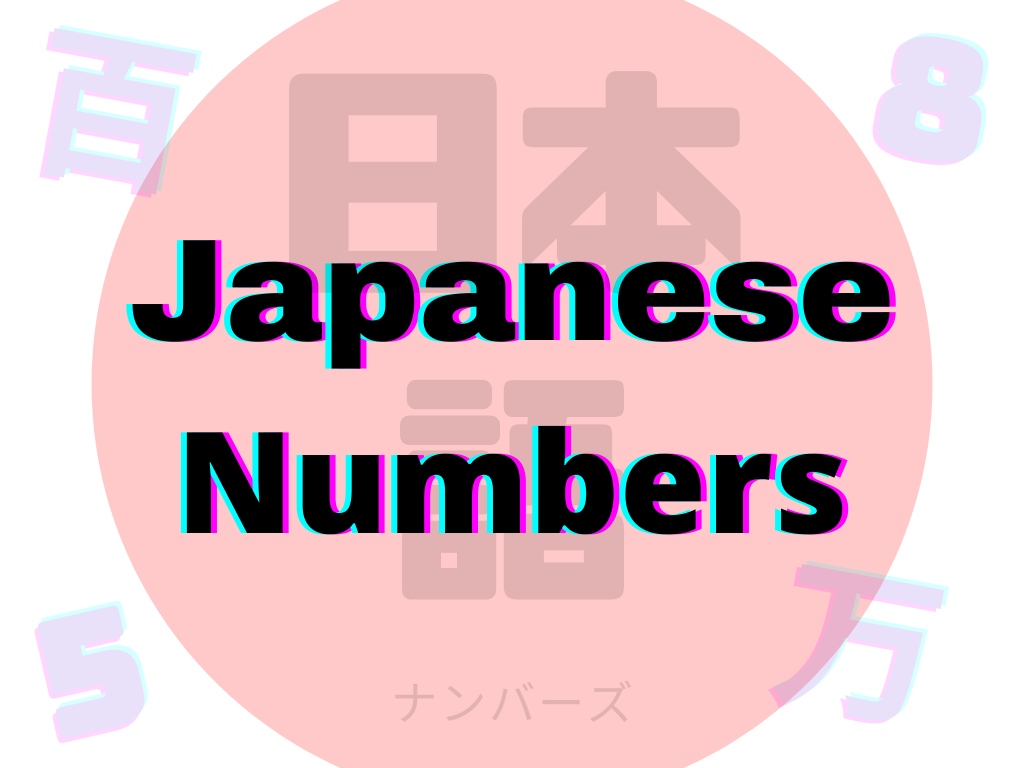
Japanese numbers are a bit complicated. Learning numbers in any language (even one’s mother tongue) is always somewhat difficult, but learning Japanese numbers in particular has some extra complexities.
For starters:
Did you know the number 100,000 is called “ten ten thousand” in Japanese?
Did you know that “1 million” is called “1 hundred ten thousand” in Japanese?
These and other fundamental differences in how Japanese conceives numbers add to the already difficult task of learning numbers in a foreign language.
But don’t fret! In this article, I will give you a detailed introduction to how Japanese numbers work.
After reading this article, you will not only know how to read Japanese numbers, but you will also start thinking about numbers the way the Japanese language does.
This will allow you to translate between an English mentality and a Japanese one.
But before we get into any theory, let me give you the names of Japanese numbers 0–10.
We’ll talk about them later in more depth, but I want to give you their names up front so you can start to get a feel for Japanese numbers:
0 = rei
10 = jū
To understand the names of all other Japanese numbers, though, we need to get into a bit of theory. We won’t get into any arithmetic (sum, difference, multiplication, division), so don’t worry if you hate math!
We will start with some basic mathematics concepts, but I promise they won’t be too difficult. Plus we’ll discuss Japanese numbers all the way to 1 trillion, so it’ll all be worth it.
So let’s get to it! To learn how Japanese numbers work, we first need to talk a little about the number 10.
Note: If you’re just beginning to learn Japanese and are looking for a guide on getting started, check out my list of 5 resources for learning Japanese.
Table of Contents
Powers of 10
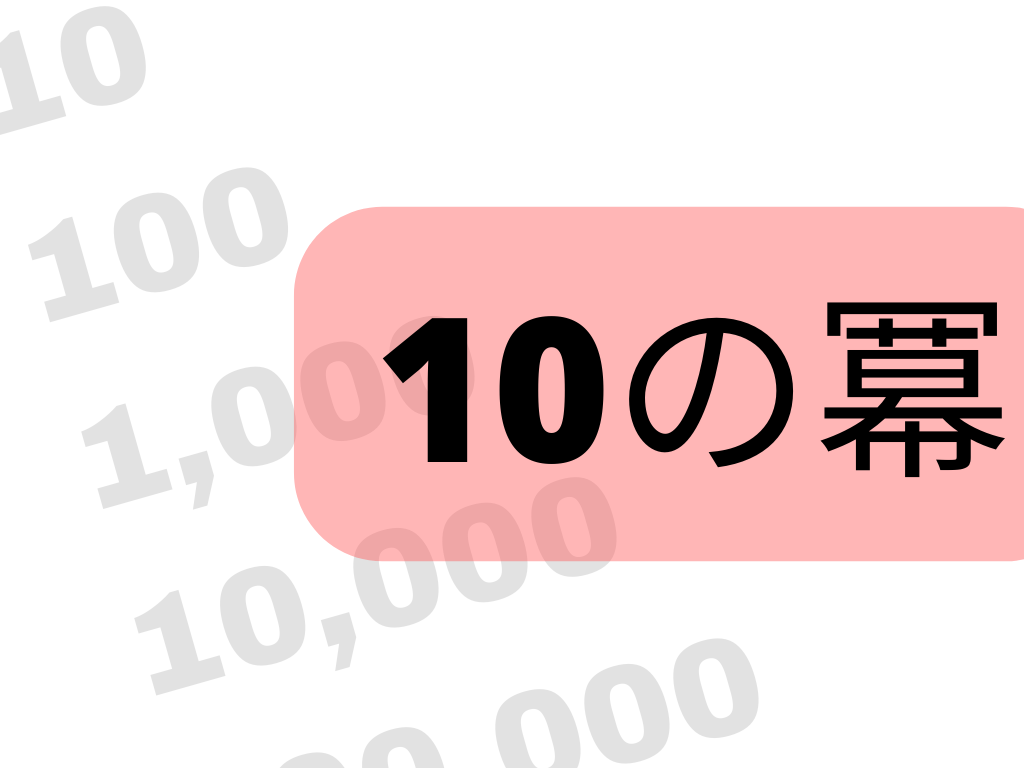
The number ten is very important to humans. Since most humans have ten fingers, the number ten is a pretty natural benchmark for counting. Notice how we have ten digits:
0 1 2 3 4 5 6 7 8 9
If you count from 0 to 9, you only need a single digit to represent all the numbers in the sequence. But what happens when you need to write the number ten?
10
We run out of single digits, so we add a new second digit to the left, make that digit 1 and reset the first digit to 0. After that, the numbers 11 through 19 simply change one digit (the first digit):
11 12 13 14 15 16 17 18 19
And what happens when we get to twenty?
20
We run out of digits again for the first digit, so we increase the second digit to 2 and again reset the first digit to 0. This pattern continues all the way to 99:
0 .. 9
10 .. 19
20 .. 29
30 .. 39
40 .. 49
50 .. 59
60 .. 69
70 .. 79
80 .. 89
90 .. 99
What happens when we get to one hundred?
100
We run out of digits for both digits, so we add a new third digit to the left, set that digit to 1 and reset the others to 0.
Then we can express all numbers from 101 to 999, until we get to one thousand, where we have to add yet another digit: 1,000.
With that, we can get all the way to 9,999 and then, for the number ten thousand, we again add another digit: 10,000.
This pattern of adding a new digit to the left set to 1 and resetting the rest to 0 continues to infinity.
These numbers made up of a 1 followed by any number of 0s are special to humans. These numbers are called powers of 10.
10 = ten
100 = one hundred
1,000 = one thousand
10,000 = ten thousand
100,000 = one hundred thousand
1,000,000 = one million
10,000,000 = ten million
100,000,000 = one hundred million
1,000,000,000 = one billion
…
Notice the English names for these numbers.
English has unique names for the numbers 10 (ten), 100 (hundred) and 1,000 (thousand), but, starting with 10,000, English starts combining the names of previous powers of 10 to make new names: ten thousand.
This continues with 100,000 (hundred thousand), and then—for 1,000,000—English adds a new unique name: million.
Then English again combines previous names for the next powers of 10 (ten million and hundred million) until the next unique name comes up, which is “billion” for 1,000,000,000.
Japanese numbers work similarly to English numbers in that they are based on powers of 10 and follow a very regular pattern.
However, there is one seemingly small difference that makes everything complicated.
More from the blog
Japanese desu – The Japanese copula
The verb です (desu) is the Japanese word for “to be.” Like all Japanese verbs, です (desu) is placed at the end of the clause it belongs to. If the sentence with です (desu) is made up of a single clause, then です (desu) goes at the end of the sentence.
Oh, Man (10,000)
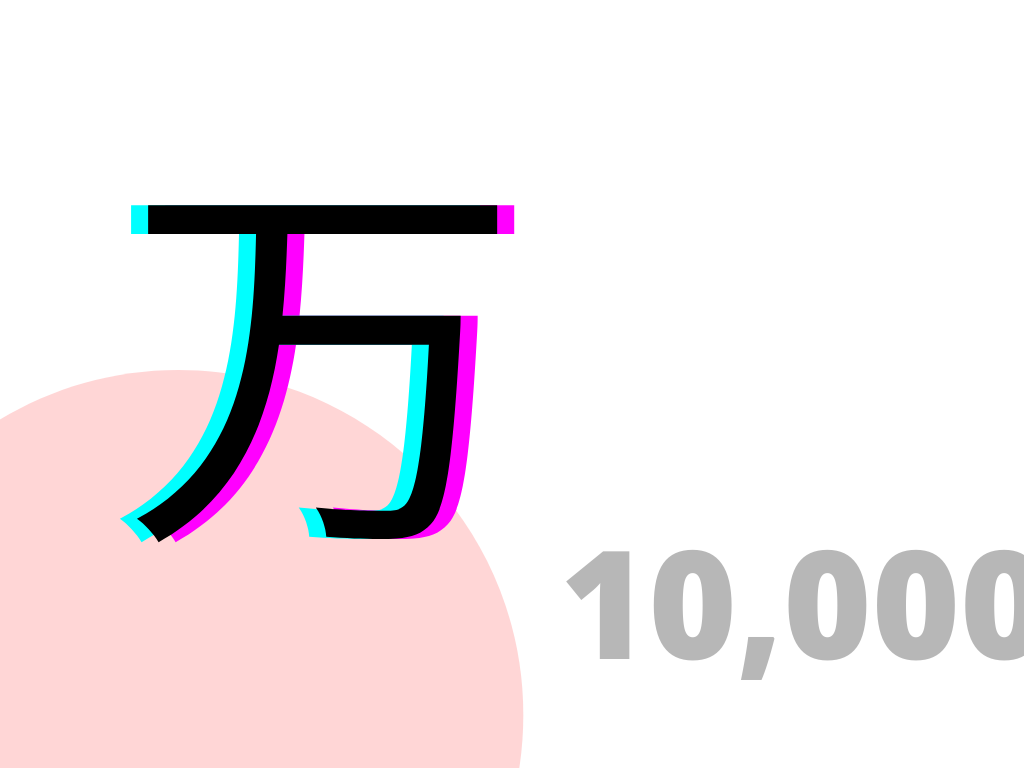
Japanese Numbers from 0 to 10
The Japanese Number Naming Pattern
From 11 to 19, the names of Japanese numbers follow a regular pattern made up of jū followed by the name of the the first digit:
Ten Thousand Breaks the Mold
The number 10,000 is where things get really interesting in Japanese.
As we know, in English, the number 10,000 is named combining the names of previous powers of 10: “ten thousand.”
Therefore, coming from an English mentality, you might expect that 10,000 would be called something like “jūsen.”
However, that’s actually not the case in Japanese. In Japanese, the number 10,000 has a unique name, just like jū 十, hyaku 百, and sen 千.
Ten Thousand Is One Man

One Million in Japanese
Seeing the powers of 10 this way makes the pattern clearer. It takes practice (and patience), but you’ll eventually get used to thinking about numbers the Japanese way.
The Road to 1 Trillion in Japanese
The next power of 10 is 1,000,000,000.
In English, this number has already exhausted the names “ten” and “hundred” (because it’s the power of 10 that comes after “one hundred million”), and is thus given a new unique name: billion.
The Yen and Japanese Instagram Followers

The Yen
Let’s talk about the Japanese yen.
The yen (¥) is the Japanese currency. While the value of any given currency fluctuates wildly every day (and the pandemic has significantly changed currency dynamics), for many years the value of 1 yen has been rounded to approximately 0.01 US dollars.
¥1 ~ US $0.01
This conversion has changed with the pandemic, but it’s still a useful (very) rough estimate, so we’ll use it for our examples.
Under this conversion, 1 yen is roughly equal to 1 cent of a US dollar. A nice trick to convert dollars into yen with this rough conversion is to add two 0s to the right of the US dollar amount.
With this (very) rough conversion between the two currencies, let’s try to find yen approximations to some US dollar amounts. Let’s start with $100.
$100 ~ ¥10,000
So 100 dollars is approximately 10,000 yen. In Japanese, this amount would be called either man 万 or ichiman 1万 (literally “one man“).
How about $10,000?
$10,000 ~ ¥1,000,000
Look at that! We already made it to 1 million yen (called either hyakuman 百万 or ippyakuman 1百万 in Japanese)!
How about $1 million?
$1,000,000 ~ ¥100,000,000 (ichioku 1億)
So we need to use oku 億 just to express an amount of yen equivalent to US $1 million or greater.
During the height of the COVID pandemic, President Biden signed into law the American Rescue Plan, which distributed $1.9 trillion in aid to Americans.
Don’t worry, we’re not even going to try to convert that into yen. However, we can try to translate that amount of dollars into Japanese:
1,900,000,000,000 = icchōkyūsenoku 1兆9千億
From our discussion in the previous section, we know one trillion is chō 兆 in Japanese and that one hundred billion is senoku 千億, so 1.9 trillion must be 1 chō 9 senoku or 1兆9千億.
These examples should demonstrate that knowing Japanese numbers up to 1 trillion isn’t some academic exercise.
Japanese handles really big numbers on a daily basis, especially because of the significant difference in value between the yen and the dollar.
Thinking about buying an iPhone?
You can expect to pay over ¥100,000 for one of the latest models.
Let’s now look at how Instagram followers are expressed in Japanese numbers.
This exercise will further show the usefulness of understanding big numbers in Japanese and of learning the kanji for Japanese powers of 10.
Japanese Instagram Follower Count
Remember that I showed you the kanji for various powers of 10 and that I mentioned they’re used in the real world?
Well, one place they’re commonly used is in displaying Instagram follower counts.
Let’s look at a few real-world examples of how Instagram follower counts are displayed in Japanese. But first, I’ll sum up the kanji we’ve studied in this article for various powers of 10:
10 = jū 十
100 = hyaku 百
1,000 = sen 千
10,000 = man 万
100,000,000 = oku 億
1,000,000,000,000 = chō 兆
Let’s look at our first Instragram follower count example:
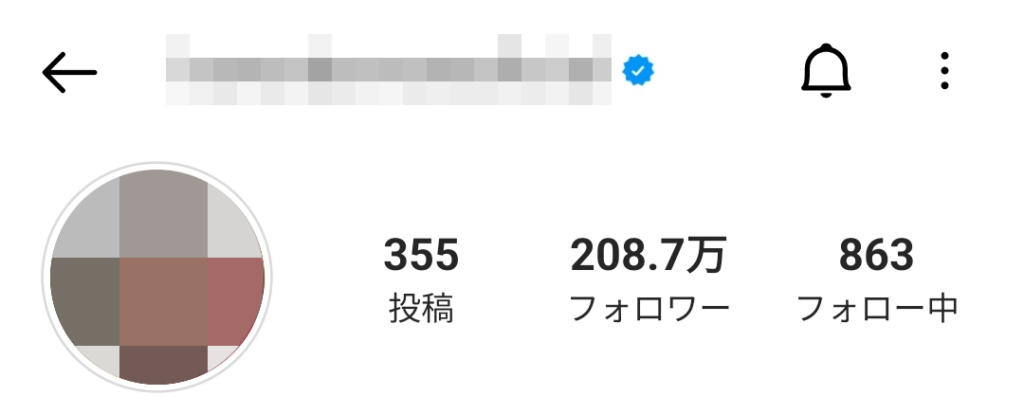
The second column is the one indicating someone’s follower (フォロワー) count.
As we can see, Person 1 has 208.7万 followers. How many followers would that be in English?
Since this number is expressed in 万 (man), we know that the digit located just to the left of the decimal point (the 8) must be the one that corresponds to the 万 power of 10.
In other words, the 8 just to the left of the decimal point must be located where the 1 in 10,000 is located, that is, the fifth place. With that clue, we can expand the number like so:
2087000
And if we add commas every three digits, we get:
2,087,000
To produce this expansion, we removed the 万, moved the decimal point four places to the right (so the 8 will now be located in the fifth place) and added zeros to fill the places to the right of the 7.
With this expanded number, we see that 208.7万 translates as “2 million 87 thousand,” so Person 1 has over 2 million Instagram followers.
In case you’re wondering, in Japanese, the number 2,087,000 is read nihyakuhachimannanasen or 2百8万7千.
See how useful those kanji for powers of 10 are?
And if you’re wondering how to read 208.7万, it would be nihyakuhattennanaman (literally, “two hundred eight point seven ten thousand”). The decimal point is read ten in Japanese.
Whew, that was a bit of a mental workout, wasn’t it?
Not only did we have to think about a number expressed in 万, but we also added the complexity of the decimal point, which we hadn’t discussed until now.
Let’s look at another example:
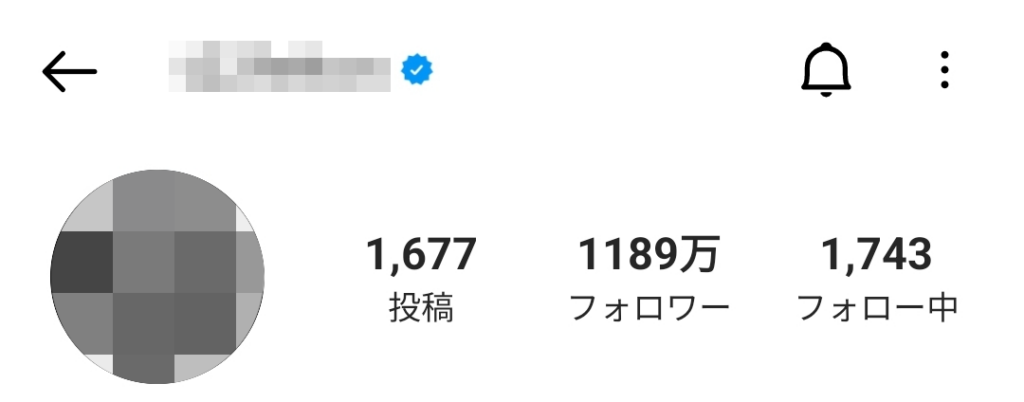
With this user, we’ve gone up one power of 10 compared to the previous example. Person 2 has 1,189万 Instagram followers.
First, let’s expand that number, as we did for the previous example.
This time, there is no visible decimal point, so the point must be located in the rightmost spot of the entire number, that is, right after the 9. This means that the 9 must be in the fifth place:
11890000
If we add the commas, we get:
11,890,000
So 1,189万 translates in English to “11 million 890 thousand,” which means Person 2 has over 11 million Instagram followers.
In Japanese, the number 11,890,000 is read issenippyakuhachijūkyūman or 1千1百8十9万.
Since the number 1,189万 doesn’t have a visible decimal point, it is read exactly the same as 11,890,000.
Did that second example help make things clearer? I have one more example, but, don’t worry, this one is really simple.
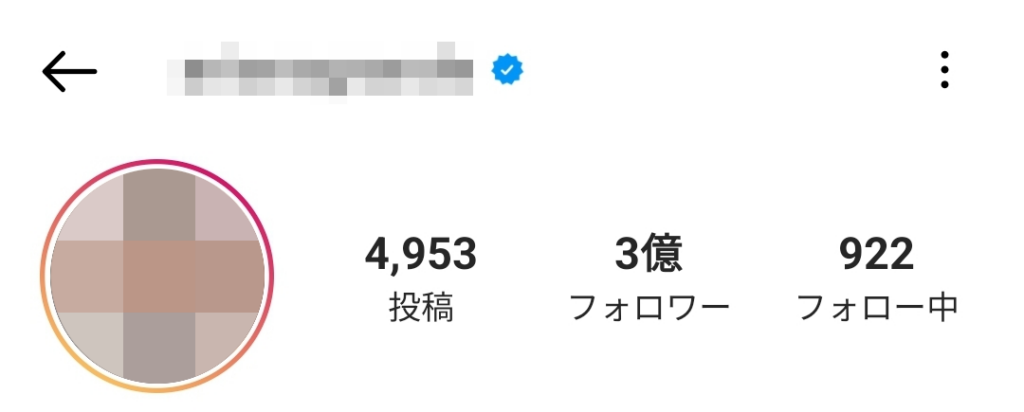
This extremely famous user has 3億 Instagram followers. We already know that 億 means 100,000,000, so Person 3 has over 300,000,000 Instagram followers.
I hope these Instagram follower examples have demonstrated how useful and important the kanji for powers of 10 are for understanding Japanese numbers.
They also should serve to further demonstrate that learning how to express big Japanese numbers is an important skill for everyday Japanese.
Conclusion
Understanding Japanese numbers is complicated when starting out from an English mindset.
Not only does one have to learn the names of the numbers, but one must also learn how to think about numbers the way Japanese does, which is different from the English way.
However, with a solid understanding of the powers of 10, getting used to using man 万 is possible with time and practice.
Once you manage to start thinking in terms of Japanese powers of 10 such as man 万 (10,000), sen 千 (1,000), hyaku 百 (100), and jū 十 (10), the rest will fall into place much more easily.
